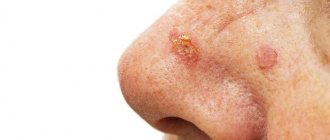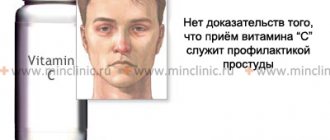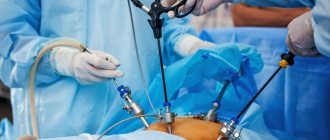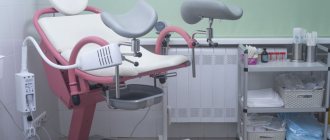The main mechanism of impaired fertility in multifollicular (or polycystic) ovaries is chronic anovulation. The International Classification of Diseases, X Revision, defines this condition as N97.0 – female infertility associated with lack of ovulation. The isolation of this condition into a separate code is apparently due to the wide distribution of this pathological condition in the population. It is believed that three quarters of patients with endocrine factor infertility have chronic anovulation associated with multifollicular ovaries.
Are multifollicular ovaries and pregnancy compatible?
Multifollicular ovaries are a condition in which 10 or more follicles mature in the gonads (normally up to 7). A large number of follicles can be either normal or a symptom of PCOS (polycystic ovary syndrome). Causes of multifollicular changes in the structure of the ovaries:
- puberty;
- heredity;
- stress, constant psychological stress;
- long-term use of oral contraceptives;
- breastfeeding period (increased prolactin levels);
- sudden weight loss;
- obesity.
The cause of multifollicular transformation of the structure of the ovaries (production of a large number of follicles) can be diseases of the endocrine system (diabetes mellitus, hypo- and hyperthyroidism). That is why, if multifollicular ovaries are suspected, the doctor will recommend a consultation with an endocrinologist.
Causes and mechanism of formation of pathology
The causes of the disease are hereditary. Inheritance is indirect, as it is caused not by one gene, but by their combination. Polycystic ovary syndrome, the causes of which are not yet fully understood, is accompanied by:
- decrease in the level of female hormones - estrogens;
- an increase in the amount of the male hormone - testosterone;
- increased concentration of insulin, a pancreatic hormone;
- the ratio of luteinizing and follicle-stimulating hormones is 2.5–3 (with the norm being 1.5–2).
However, experts identify the following reasons:
- increased production of androgens;
- obesity, overweight;
- hormonal imbalances;
- anxiety, prolonged depression;
- hereditary predisposition;
- consequences of infectious inflammatory processes;
- climate impacts;
- intoxication of the body;
- severe brain pathologies;
- complications during pregnancy/childbirth.
Insulin resistance is one of the most common causes of PCOS. Insulin is a pancreatic hormone responsible for blood sugar levels. If insulin sensitivity decreases, androgens (male sex hormones) are synthesized excessively.
Under the influence of androgens, the outer shell of the ovaries begins to thicken, and mature follicles are not able to collapse. Thus, they enlarge and fill with fluid, transforming into cysts.
Obesity is not the only cause of increased androgen production. Impaired functioning of the hypothalamus contributes to a decrease in estrogen levels, which increases the activity of androgens.
With polycystic ovary syndrome, the underlying factor is always some kind of disruption of the hormonal system.
Multifollicular ovaries and pregnancy
Is it possible to get pregnant with multifollicular ovaries? Experts say that this condition is not a pathology, and therefore cannot be a cause of infertility. Multifollicular ovaries do not affect the ability to become pregnant, but to some extent they contribute to inhibition of the conception process. Moreover, such a woman may not have menstruation for several months, which is why ovulation simply does not occur.
Taking this into account, we can summarize that multifollicular ovaries and pregnancy are compatible. Women with this condition require more careful attention from a specialist. As a correction, a course of hormonal medications according to an individual regimen may be recommended.
Treatment
If you have polycystic ovary syndrome, a women's health forum will not help you choose treatment, even in cases where advice is provided by a professional doctor. The decision on how to treat polycystic disease is made only after examination and with the results of tests in hand. When diagnosed with polycystic disease, a forum or any website cannot replace a face-to-face consultation with a good specialist.
Treatment is aimed at:
- decrease in the amount of male hormones;
- restoration of the menstrual cycle (if amenorrhea is observed, treatment should start the cycle);
- getting pregnant (if necessary);
- prevention of metabolic disorders.
With amenorrhea, other causes of its development cannot be excluded. If you have amenorrhea, treatment for polycystic disease will restore hormonal balance and not only start the menstrual cycle, but also normalize the ovulatory cycle.
If tests confirm the diagnosis, treatment may include:
- physiotherapy;
- laser treatment;
- immunostimulating and hormonal therapy.
If a woman has polycystic ovaries, treatment is carried out in several stages. To do this, the causes of polycystic disease are eliminated and hormonal levels are brought back to normal.
1. Prescribe a low-calorie diet.
Treatment with folk remedies or medications may not be necessary. Most studies prove that it regulates the cycle well and balances the amount of male and female hormones for weight loss. If polycystic disease is diagnosed, treatment with folk remedies, like traditional medicine, may be ineffective without diet. You need to lose weight gradually so that the body does not receive additional stress and this does not cause a backlash. If you miss your period (amenorrhea), treatment begins with proper nutrition to help you lose weight.
2. Treat with hormonal contraceptives.
As mentioned above, PCOS is a hormonal disorder. Hormonal contraceptives allow you to regulate the amount of male and female hormones.
3. Treat with metformin.
Metformin is a drug for the treatment of diabetes mellitus. It regulates the functioning of insulin, a hormone that causes both diabetes and polycystic ovary syndrome. Metformin increases the body's sensitivity to insulin. When the concentration of this hormone normalizes, the production of other hormones improves.
4. A course of antiandrogen drugs is prescribed.
They reduce the effect of male hormones: reduce hair loss on the head and hair growth on the body, reduce the amount of acne and oily hair.
5. Stimulate ovulation (if a woman wants to get pregnant).
In most cases, ovulation can occur with the methods listed above. But before stimulating ovulation, it is necessary to prepare the body. In particular, the mentioned courses of treatment help with this.
6. The operation is performed.
Surgery is a last resort. It is carried out in cases where conservative, that is, non-surgical, treatment has not helped. Unfortunately, many women, having chosen traditional treatment for polycystic disease, start the disease and bring it to the stage where surgery can no longer be avoided. The operation can cause adhesions and obstruction of the fallopian tubes.
If you have polycystic ovary syndrome, the forum may contain useful reviews about medications, treatment results, and perhaps help you choose a doctor. However, remember: this is a serious disease and the forum will not help cure polycystic disease.
Laparoscopy
If you have treated polycystic ovary syndrome with the above methods and pregnancy has not occurred, your doctor may prescribe surgery. The modern method of performing the operation is laparoscopy: in case of polycystic disease, the thickened layer of the ovarian capsule, which interferes with ovulation, is removed. The essence of laparoscopy is that the operation is performed not through one long incision, but through several small ones (usually three incisions measuring 1–2 cm). Through them, a thin needle is inserted into the abdominal cavity, through which carbon dioxide enters. Then a laparoscope is inserted: when the abdominal cavity is filled with gas, the doctor clearly sees all the internal organs.
After laparoscopy, the recovery period is much shorter compared to conventional surgery. The likelihood of conception after surgery is high in the first months. Over time, the capsule thickens again, and ovulation stops.
Laparoscopy makes it possible to get pregnant in 3 out of 4 cases. If pregnancy does not occur even after surgery, you can try another relatively new method. This is the use of gonadotropin releasing hormone. Its effectiveness is noted after 2–3 months of treatment.
If polycystic ovaries are not treated in a timely manner, the following may develop:
- oncological diseases (breast cancer, uterine cancer);
- vaginal bleeding not associated with menstruation;
- infertility.
To date, it is impossible to completely cure the disease. If a woman has polycystic ovaries, treatment only helps to negate the manifestations and consequences of the disease.
Signs of multifollicular ovaries (MFO)
In most cases, the symptoms of multifollicular ovaries are not pronounced. The woman does not feel any changes in her health, and there is no pain at all. The only sign of multifollicular ovaries (MFO) may be the absence of menstruation. Sometimes chronic amenorrhea lasts three to six months. The explanation for this is simple - none of the follicles reaches the dominant size and ovulation does not occur.
On our Dobrobut website you can make an appointment with a specialist and for a full examination. The doctor will tell you what the diagnosis of multifollicular ovaries means and answer your questions.
PCOS and multifollicular ovaries - what is the difference
PCOS is polycystic ovary syndrome, which can be easily confused with MFJ on ultrasound. The main difference is that a woman with multifollicular ovaries ovulates. In addition, PCOS is characterized by:
- irregular menstruation;
- long monthly cycle;
- increased levels of LH, FSH and testosterone in the blood;
- tendency to corpulence;
- male pattern hair growth;
- infertility.
Please note that multifollicular ovaries, as a rule, do not require drug treatment. And polycystic ovary syndrome requires serious correction and specialist supervision.
Polycystic ovary syndrome: alternative treatment
The consequences and symptoms of this disease most often respond well to drug treatment. But with one caveat: in cases where the disease is not advanced. If a woman chooses traditional treatment over taking pills, it turns into a malignant tumor, causing bleeding from the vagina and infertility. When diagnosed with polycystic ovary syndrome, treatment with folk remedies often becomes a cause of complications rather than a solution to the situation. If you have amenorrhea, herbal treatments will not help restore hormonal balance. Amenorrhea, the treatment of which must be carried out with the participation of a doctor, may be accompanied by obesity and other signs of hormonal imbalance.
If you have polycystic ovary syndrome, treatment with folk remedies can only take place under the supervision of a doctor. Alternative treatment can be an addition to medication, but your attending physician must know what and how you are doing at home.
Traditional treatment for polycystic disease can be based on yogic practices designed to improve the health of the pelvic organs. When treating with traditional remedies, yoga is the safest choice to help prevent the development of other diseases.
Traditional treatment is carried out comprehensively: taking herbs is combined with compresses and vaginal tampons. If you have been diagnosed with polycystic disease, treatment with folk remedies may include:
- use of vaginal tampons;
- applying compresses;
- taking herbal tinctures and tablets.
The disease develops in adolescence: traditional treatment for a teenager and lack of consultation with a doctor can lead to the fact that a girl will never be able to have children.
In the case of polycystic ovary syndrome, treatment with folk remedies should not harm in the first place. For polycystic ovary syndrome, the alternative treatment you choose should have as few side effects as possible. Remember this, take care of your health.
Diagnosis of multifollicular echostructure of the ovaries
As a rule, this condition of the ovaries is diagnosed accidentally during an ultrasound scan and is characterized by:
- The size of the ovaries is within normal limits or slightly larger.
- The size of the follicles is no more than 9 mm. For PCOS – from 12 or more.
- Echogenicity. The multifollicular echostructure of the ovaries does not exceed the echogenicity of the uterus.
- The location of the follicles is random.
- The thickness of the capsule is within normal limits.
Your doctor will tell you more about the echo signs of multifollicular ovaries on ultrasound during the examination. You can find out the cost of the study by calling the above number.
How to treat multifollicular right/left ovarian syndrome
Treatment is necessary only in case of menstrual irregularities and in the absence of ovulation for six months, confirmed by folliculometry. The results of additional studies (ultrasound, blood tests for hormones and Doppler sonography) and medical history will help you choose the right therapy. The duration of treatment is from three to six months.
How to treat multifollicular right/left ovarian syndrome during puberty? No correction required. After the menstrual cycle is established, the condition usually normalizes on its own.
What should I do if multifollicular ovarian syndrome is the result of long-term use of hormonal contraceptives? Doctors recommend taking a break until function is fully restored.
How to get pregnant with multifollicular ovaries? Gynecologists recommend that women with menstrual irregularities undergo a preventive course of hormone therapy. The doctor will determine the choice of drug and dosage after receiving the examination results.
Polycystic ovary syndrome in young patients (literature review)
The variety of clinical manifestations of the syndrome is associated with difficulties in its diagnosis. In recent years, several diagnostic criteria for polycystic ovary syndrome (PCOS) have been proposed [1].
According to the 2010 European Society of Human Reproduction and Embryology (ESHRE) and American Society for Reproductive Medicine (ASRM) consensus symposium [2], PCOS affects 6% to 10% of women , provided that the diagnostic criteria of the National Institutes of Health (NIH) were applied; If we rely on the criteria of the 2003 Rotterdam Symposium [3], then this figure is 15%.
It is currently difficult to determine the prevalence of PCOS among adolescent girls due to the lack of reliable diagnostic criteria and insufficient attention to the manifestation of endocrine and metabolic manifestations during puberty.
According to the 2012 ESHRE consensus, 45% of patients with PCOS experienced infertility [2]. The frequency of PCOS in the structure of endocrine infertility reaches 62% [2]. The close association of polycystic ovary syndrome with dysmetabolic conditions entails the development of complications such as obesity and type 2 diabetes mellitus, which subsequently develops in 10% of women of reproductive age [4–7, 8, 9]. In 2–7% of patients with PCOS, hyperplastic processes of the endometrium and mammary glands are likely to develop [2, 8, 9].
Features of diagnosing PCOS in adolescents
The formation of PCOS and the manifestation of its clinical manifestations often begin in adolescence [10, 11].
A number of experts [12, 11], in order to avoid overdiagnosis and unjustified therapeutic measures, are inclined to believe that it is possible to make a diagnosis of PCOS only after 18 years of age, and before that it is advisable to use the term “emerging PCOS.” However, according to the latest ESHRE/ASRM consensus symposium, young patients can be diagnosed with PCOS if all three diagnostic criteria are confirmed, as well as if they have hirsutism [13].
When identifying signs of developing PCOS in adolescents, specialists are faced with a number of difficulties due to the peculiarities of the functioning of the girl’s reproductive system during puberty.
Menstrual irregularities
One of the important clinical manifestations of PCOS is menstrual irregularity - oligomenorrhea or amenorrhea. However, in the first years after menarche, anovulation can be detected in 40–50% of girls [12, 11]. The number of ovulatory cycles gradually increases from 20–25% in the first year after menarche to 60–65% by the fifth year, and this situation, reflecting the formation of the girl’s reproductive system, is not a pathology if it is considered separately from other criteria. At the same time, the number of ovulatory cycles in women with diagnosed PCOS does not exceed 30–32% [4]. The reason for medical caution in relation to young patients should be the lack of a tendency to form a stable regular menstrual cycle within one and a half to two years after menarche.
Hyperandrogenemia/hyperandrogenism
The main clinical manifestations of hyperandrogenemia (HA) in PCOS are various types of androgen-dependent dermopathy: hirsutism, acne and androgenic alopecia. The prevalence of acne among adolescents is quite high and is often a transient phenomenon. A much more significant sign of HA is hirsutism, assessed using the Friedman scale. Laboratory diagnosis of GA is often difficult: the determination of total testosterone alone in the absence of information on indicators such as sex steroid binding hormone (SSBH) and/or free testosterone is not very informative (including due to the fact that excess testosterone is converted into more biologically active dihydrotestosterone (DHT), but reliable methods for determining these parameters are under development [6]. Also, when conducting a multisteroid analysis, an increase in androstenedione was detected in 20% of girls with developing PCOS [14]. Perhaps one of the links in this mechanism is excess body weight and an increase in the level of free fatty acids, which can lead to activation of 17,20-lyase and, as a consequence, the synthesis of androgens through the pathway of androstenedione, DHEA and testosterone. Traditionally, one of the most important criteria for diagnosing PCOS is considered to be a change in the ratio of luteinizing hormone (LH)/follicle-stimulating hormone (FSH) [4], while the data of the Rotterdam consensus and the American National Institutes of Health do not include it. There are several isoforms of LH, differing in the structure of the side oligosaccharide chains and, as a consequence, in the level of biological activity. A truly informative marker of PCOS may be precisely the level of bioactive forms of LH, and not its ratio with FSH [3, 6].
Ultrasound diagnostics
The ultrasound picture of PCOS is an ovarian volume of more than 10 cm3, the presence of many (more than 12) equal-sized cystic-atretic follicles with a diameter of up to 10 mm, located along the periphery. It is important to differentiate this picture from multifollicular ovaries, characteristic of early puberty, hypogonadotropic amenorrhea, and long-term use of combined oral contraceptives (COCs). Multifollicular ovaries (MFO) are characterized by a small number of follicles with a diameter of 4–10 mm located throughout the ovary and, most importantly, normal ovarian volume [4, 15, 16]. MFNs are a common phenomenon and a normal option for girls in puberty and are not a sign of PCOS.
Metabolic disorders
Patients who demonstrate certain manifestations of metabolic syndrome may represent a risk group for the development of PCOS [4, 17, 18]. Traditional physical methods: determining the body mass index, assessing the waist-to-hip ratio, determining the thickness of the skin fold - allow us to identify the first signs of metabolic disorders. A direct connection has been established between the degree of menstrual irregularities and the body mass index of patients with PCOS, as well as between insulin resistance and HA. The following indicators serve as markers of dysmetabolic conditions in PCOS: F. Caro index - less than 0.33; HOMA-IR (Insulin Resistance Index - Homeostasis Model Assessment of Insulin Resistance) - more than 2.86 points; hyperinsulinemia - more than 12.8 µU/ml and lipid metabolism disorders (increased levels of total cholesterol and triglycerides, decreased levels of high-density lipoproteins (HDL)) [3, 6, 19].
Treatment options for PCOS in young patients
An urgent issue is the choice of effective and safe treatment measures aimed at correcting PCOS in teenage girls. The need for therapy in this group of patients is obvious, and medical tactics directly affect the girl’s reproductive prognosis [2].
In patients of reproductive age, the leading reason for visiting a doctor is infertility. Therefore, their main treatment strategy is to restore reproductive function by stimulating ovulation and correcting concomitant hormonal and metabolic disorders. In some cases, if there is no effect from ovulation stimulation, surgical treatment is used - laparoscopic cauterization (drilling) of the ovaries to reduce the excess number of primordial follicles and reduce hyperandrogenism. The effectiveness of treatment is mainly determined by the achievement of the desired pregnancy. For the treatment and prevention of polycystic ovary syndrome, combined monophasic oral contraceptives are also used.
Special attention is required for teenage girls who have manifestations of PCOS - menstrual irregularities, hyperandrogenism and MFJ on ultrasound - combined with metabolic syndrome (overweight and obesity, type 2 diabetes, dyslipidemia) due to pronounced decompensation of existing endocrine- metabolic disorders [20]. It is to them that therapeutic measures should be primarily directed. Timely correction of metabolic disorders, achieved by changing lifestyle and a balanced diet, a reduction diet, and the use of hypoglycemic drugs, leads to normalization of hormonal status and restoration of menstrual function at the clinical level.
In the absence of the desired effect, the second stage of therapy may be the use of COCs. All the mechanisms that COCs implement to control the menstrual cycle have not yet been studied, but it is known that they suppress the secretion of LH, which, in turn, leads to a decrease in androgen levels. The estrogen component of combined contraceptives leads to an increase in PSSH levels and, consequently, a decrease in the concentration of freely circulating testosterone. The use of these drugs leads to suppression of adrenal androgen secretion, possibly because COCs inhibit adrenocorticotropic hormone (ACTH) [2, 14, 21].
At the moment, there are a number of combined oral contraceptives containing a progestogen component with antiandrogenic activity (drosperinone, cyproterone acetate), positioning themselves as recommended for use in girls and women with clinically significant hyperandrogenism [2, 14, 13, 22]. Their action is based on a number of mechanisms: inhibition of the synthesis of ovarian androgens by a direct connection mechanism, blocking of peripheral androgen receptors, reduction in the formation of DHT as a result of suppression of 5-alpha reductase. Drosperinone also has a hypoglycemic effect. It is possible to prescribe combined contraceptives according to a standard regimen (21 days, then a 7-day break) for 3–6 menstrual cycles and according to a prolonged regimen (63 days, then a 7-day break) [8, 20]. However, the effectiveness of these drugs is still the subject of much debate and is questioned, perhaps due to the lack of reliable data on effectiveness and limitations of their use in young patients. For the treatment of hyperandrogenic conditions, it is possible to use antiandrogenic drugs (cyproterone acetate) in combination with COCs, estradiol valerate or separately [6].
After a course of combined oral contraceptives (in combination with or without antiandrogen drugs), ovulation induction is possible [8].
Conclusion
The formation of PCOS in puberty is the result of the influence of various pathogenetic factors on the reproductive function, as a result of which the formation of menstrual function, growth and maturation of follicles are disrupted, resulting in the formation of anovulation.
Manifest signs of polycystic ovary syndrome can be observed during normal puberty, and some of its symptoms may be transient phenomena. Issues of early diagnosis, determination of clinically significant markers of PCOS and its predictors in adolescent patients require in-depth study to optimize approaches to screening studies, identify risk groups and develop a systematic approach to the correction of various endocrine and metabolic disorders.
The most reliable criteria for the differential diagnosis of developing polycystic ovary syndrome in young patients are: a combination of ultrasound (morphological) picture of polycystic ovary syndrome, when compared with the hormonal profile (the ratio of sex hormones and hyperandrogenism), the dynamics of the formation of the menstrual cycle during 12–18 months of observation (oligomenorrhea, amenorrhea), against the background of dysmetabolic disorders (obesity, hyperinsulinism, impaired glucose tolerance).
In young patients, the main directions of treatment for developing PCOS are: restoration of menstrual function, correction of hyperandrogenic conditions and metabolic disorders [8, 9, 19–22].
At the first stage of prevention of developing polycystic ovary syndrome in girls, it is necessary to correct metabolic disorders with the help of a balanced reduction diet, an active lifestyle, aerobic sports (running, swimming, etc.), and the use of herbal remedies [7, 17, 18, 22].
When persistent signs and progression of polycystic ovary syndrome are detected, it is advisable to use monophasic hormonal COCs against the background of cyclic vitamin therapy and enzyme therapy, followed by stimulation of ovulation in the reproductive period to realize reproductive function.
Surgical treatment - cauterization of the ovaries (drilling) in adolescence is not advisable.
The reproductive prognosis in patients with developing polycystic ovary syndrome largely depends on early diagnosis, the effectiveness of pathogenetic therapy and restoration of ovulation.
Literature
- Adamyan L.V., Bogdanova E.A. Operative gynecology of children and adolescents. M.: ElixKom, 2004. pp. 208–211.
- Fauser BC Consensus on women's health aspects of polycystic ovary syndrome (PCOS): the Amsterdam ESHRE/ASRM-Sponsored 3rd PCOS Consensus Workshop Group // Fertil Steril. 2012; 97:p. 28–38.
- The Rotterdam ESHRE/ASRM-Sponsored PCOS Consensus Workshop Group Revised 2003 consensus on diagnostic criteria and long-term health risks related to polycystic ovary syndrome // Fertil Steril. 2003; 81:p. 19–25.
- Manukhin I. B., Gevorkyan M. A., Kushlinsky N. E. Polycystic ovary syndrome. M.: MIA, 2004. pp. 192–196.
- Shilin D. E. Polycystic ovary syndrome // International diagnostic consensus and modern ideology of therapy. 2004; No. 9, p. 27–36.
- Fritz MA, Speroff L. Clinical Gynecologic Endocrinology and Infertility. Lippincott Williams & Wilkins, 2011, pp. 495–533.
- Bloomgarden ZT American Association of Clinical Endocrinologists (AACE) consensus conference on the insulin resistance syndrome // Diabetes Care. 2003; 26:p. 1297–1303.
- Smetnik V.P. Non-operative gynecology. Guide for doctors. St. Petersburg: SOTIS, 1995. 224 p.
- Guide to endocrine gynecology / Ed. E. M. Vikhlyaeva. M.: Medical Information Agency, 2006. 784 p.
- Uvarova E. V. Modern methods of correcting hyperandrogenism in teenage girls. In the book: Effective pharmacotherapy in obstetrics and gynecology. 2008. pp. 4–12.
- Gurkin Yu. A. Gynecology of adolescents. A guide for doctors. St. Petersburg: IKF Foliant, 2000. pp. 574–592.
- Bogdanova E. A. Gynecology of children and adolescents. M.: MIA, 2010. pp. 332–348.
- Bogdanova E. A., Telunts AB Hirsutism in girls and young women. M.: Medpress-inform, 2002. pp. 128–134.
- Kulakov V.I., Dolzhenko I.S. Main trends in changes in the reproductive health of girls in modern conditions // Reproductive health of children and adolescents. 2005; No. 1, p. 22–28.
- Mazitova L.P. Aslamazyan L.K. Pathogenetic rationale for local acne therapy in adolescence // Pediatric pharmacology. 2008; No. 5; With. 68–71.
- Gus A. I., Serov V. N., Nazarenko T. A. et al. Modern principles of ultrasound, clinical and laboratory diagnosis of polycystic ovary syndrome // Gynecology. 2002; No. 4: 21–30. Shilin D.E. Correction of metabolic and endocrine disorders in the treatment of hyperandrogenism in girls // Pharmateka. 2003; 16:8–12.
- Moran LJ, Noakes M., Clifton PM, Tomlinson L., Norman RJ Dietary composition in restoring reproductive and metabolic physiology in overweight women with polycystic ovary syndrome // J Clin Endocrinol Metab. 2003; Vol. 88:p. 812–819.
- Solomon CG, Hu FB, Dunaif A. et al. Long or highly irregular menstrual cycles as a marker for risk of type 2 diabetes mellitus // JAMA. 2001; 286: p. 24–21.
- Adamyan L.V., Makiyan Z.N., Glybina T.M., Sibirskaya E.V., Ploshkina A.A. Features of diagnosis and treatment of polycystic ovary syndrome in adolescent girls (analytical review) // Children's reproductive health and teenagers 2014. No. 3. pp. 16–23.
- Uvarova E.V. Hormonal drugs in the practice of a pediatric gynecologist // Attending Physician. 2002; No. 3; With. 38–45.
- Dunaif AR, Chang J. Polycystic Ovary Syndrome: Current Controversies, from the Ovary to the Pancreas. Humana Press, 2010, pp. 51–122.
- Uvarova E. V. Pediatric and adolescent gynecology. M.: Medicine, 2009. pp. 249–268.
E. V. Sibirskaya*, 1, Doctor of Medical Sciences L. V. Adamyan*, Doctor of Medical Sciences, Professor, Academician of the Russian Academy of Sciences I. E. Koltunov**, Doctor of Medical Sciences, Professor A. A. Ploshkina*
* Federal State Budgetary Educational Institution of Higher Education MGMSU named after. A. I. Evdokimova, Ministry of Health of the Russian Federation, Moscow ** Morozovskaya State Budgetary Institution, Children's City Clinical Hospital, Moscow
1 Contact information
Polycystic ovary syndrome in young patients (literature review)/ E. V. Sibirskaya, L. V. Adamyan, I. E. Koltunov, A. A. Ploshkina
For citation: Attending physician No. 12/2017; Page numbers in issue: 8-10
Tags: sexual development, mammary glands, inflammation








